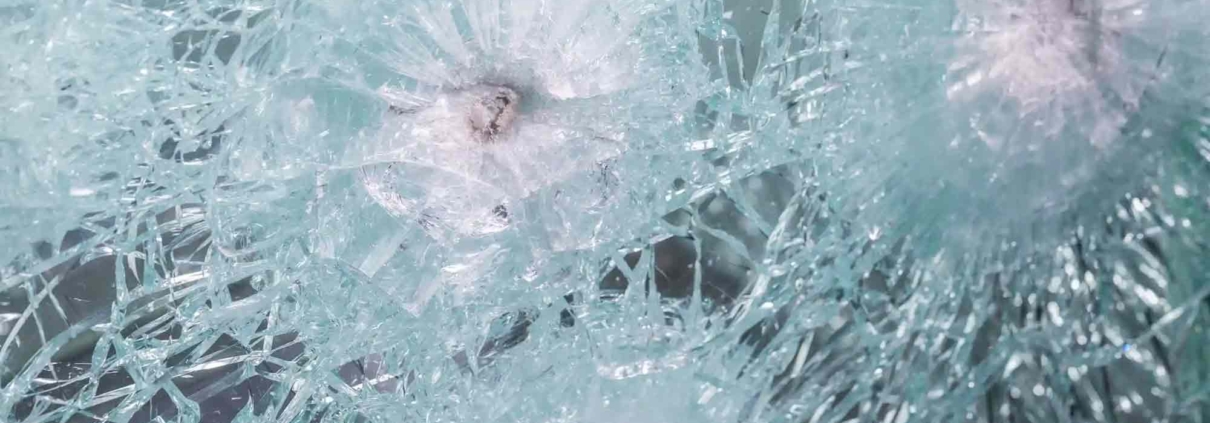What Can Break Bullet Proof Glass? Common Bullet Proof Glass Myths Debunked
Bullet proof glass serves as a critical component in modern security systems. Understanding what can break bullet proof glass is essential as we rely on this technology to protect us in various environments. Industries across the spectrum use bullet proof glass to safeguard people and property from ballistic threats. It provides a formidable barrier everywhere from banks to retail stores to embassies.
The benefits of bullet proof glass include:
- Protection against ballistic threats
- Deterrence against potential attackers
- Peace of mind for occupants
Despite its effectiveness, several misconceptions surround bullet proof glass. This article will debunk common myths to provide a clearer picture of its true capabilities and limitations.
Common Myths and Misconceptions About Bullet Proof Glass
Although bullet proof glass plays a critical role in security, it is often misunderstood. Misconceptions can lead to inadequate protection or unnecessary expenses. Below are some of the most popular myths surrounding the technology.
Misconception 1: Bullet Proof Glass Is Indestructible
The very term “bullet proof” leads many to believe that the glass is virtually indestructible. A more accurate term, however, is “bullet-resistant” because no glass can guarantee total invulnerability against all ballistic threats.
Bullet proof glass is rated according to the Underwriters Laboratories (UL) 752 standard, which specifies different levels of protection based on the type of firearm and ammunition. The levels of ballistic protection extend from levels 1-10, but here is an example of the first 3 levels which provide protection from handguns:
- Level 1: Stops three shots from a 9mm handgun
- Level 2: Stops three shots from a 357 Magnum handgun
- Level 3: Stops three shots from a .44 Magnum handgun
To learn more about the UL 752 standard, please read more on our page about this testing standard using this link.
Understanding these levels is crucial because bullet proof glass can fail if attacked with continuous gunfire or high-caliber weapons that exceed its rated protection level. The glass absorbs and dissipates the energy from bullets up to its designed capacity, but it has limitations. However, the intention is to provide protection with a window of time for people on the safe side of the glass to get to safety.
So how do you break bullet proof glass? Below are several methods including:
- Sustained attacks: Repeated shots in the same area will eventually compromise the glass.
- Powerful firearms: Weapons exceeding the glass’s UL rating will penetrate it.
- Explosives: Blast forces can shatter even high-level bullet resistant glass.
- Extreme heat: Prolonged exposure to intense heat weakens the glass structure.
- Blunt force: While more time-consuming, determined attackers might use tools like sledgehammers or power saws to break through.
These factors highlight how bullet proof glass, while highly resistant, has certain vulnerabilities.
Misconception 2: Bullet Proof Glass Is Always Made of Glass
Many people believe that bullet proof glass is made solely of traditional glass. Manufacturers use various materials to achieve different levels of protection and durability. Understanding these materials helps in selecting the right bullet-resistant glass for specific security needs.
Below are some of the most common materials that manufacturers use to make bullet proof glass:
- Laminated Glass: Comprises layers of glass and plastic (PVB or resin). It holds together when shattered, reducing injury from glass shards (or spalling). However, it offers limited ballistic protection and may not stop bullets from penetrating.
- Acrylic: This solution mostoften consists of a monolithic piece of acrylic. It is 30 times stronger and half the weight of regular glass. Acrylic is lightweight and cost-effective but is more susceptible to scratching and doesn’t offer the highest level of ballistic protection.
- Polycarbonate: Consists of thermoplastic polymers. It is soft enough to “catch” bullets without shattering, providing substantial ballistic protection. Polycarbonate is lightweight and flexible but can scratch easily and may be more expensive.
- Glass-Clad Polycarbonate: Combines layers of glass and polycarbonate. It offers higher levels of protection against ballistic threats. While extremely durable, it is heavier, thicker and more expensive than the other materials in this list.
Misconception 3: Replacing my Current Window with Bulletproof Glass will Protect Me
A fully tested bulletproof window system or bulletproof door system is required to provide complete protection. The framing is an important component not only to ensure that it can stop bullets as well but also to ensure it has the robust design to support the thicker and heavier glazing typically associated with bulletproof glass.
Misconception 4: Security Film Makes Glass Bullet Proof
Some believe that applying security film to regular glass transforms it into bullet proof glass, but security films are not bullet proof. Similar to laminated glass, these films are designed to hold shattered glass together, reducing injury from flying shards and possibly delaying forced entry.
However, they do not stop bullets from penetrating the glass.
True bullet-resistant materials undergo rigorous testing and certification (e.g., the UL 752 standard), to ensure they can withstand ballistic impacts. Relying on security film alone for ballistic protection can lead to a false sense of safety.
Misconception 5: It’s Illegal for Civilians to Have Bullet Proof Windows
A common myth is that civilians are not allowed to own bullet proof windows. So, is it illegal to have bulletproof windows?
The answer is no. In the United States, civilians can legally install bullet proof glass in their homes and businesses.
This misconception likely arises from the association of bullet resistant materials with military or government use. Installing bullet proof windows provides enhanced protection against break-ins, violent attacks and natural disasters, offering peace of mind to homeowners and business owners alike.
Misconception 6: Bullet Proof Glass Does Not Cause Spalling
Bullet proof glass can cause spalling — i.e., fragments from the interior side of the glass break off upon bullet impact, potentially injuring occupants even if the bullet doesn’t penetrate. This issue poses significant safety risks inside the protected area.
Solutions to help reduce or eliminate spalling include:
- Low-spall glass: This type of glass uses materials like tempered glass or specialized interlayers that minimize spalling. These materials absorb the bullet’s energy more effectively, reducing the chance of interior fragments and lowering the risk of injury.
- No-spall glass: This solution incorporates additional polycarbonate layers on the interior side of the glass to eliminate spalling entirely. The polycarbonate layer prevents any fragments from breaking off upon impact, providing maximum safety to occupants inside the protected area.
These solutions require careful maintenance. The polycarbonate layers can scratch easily, and cleaning products containing ammonia can damage them. Proper care ensures the glass remains effective and clear.
Bullet-Resistant Reality: Making Informed Security Choices
Understanding the true capabilities and limitations of bullet-resistant glass empowers you to make informed security decisions. We’ve dispelled common myths, revealing that:
- Bullet proof glass is resistant, not indestructible.
- Various materials offer different levels of protection.
- Certain conditions can compromise even high-grade bullet-resistant glass.
- Security film alone doesn’t provide bullet proof protection.
- Civilians can legally install bullet proof windows.
- Spalling remains a consideration in comprehensive security planning.
Armed with this knowledge, you’re better equipped to assess your specific security needs and select appropriate protection levels.
Ready to enhance your property’s security with professional-grade bullet-resistant solutions? Explore U.S. Bullet Proofing’s range of customized windows designed to meet diverse industry needs and threat levels. Our experts stand ready to guide you toward the ideal balance of protection and practicality.
Visit our bullet proof windows page to learn how we can help safeguard your property.


